
Condensation and Moisture Control


Moisture in the home can lead to serious problems with wall insulation, mould, dampness in the air, wall paint peeling, damaged textiles, rugs, or even cause your walls or ceiling paint to bubble or sag. Moisture can cause the wood in your walls to rot or mould, (mould can be a serious health hazard) or even cause structural damage to your house’s framework.)
If you notice your windows starting to fog or have water droplets (condensation), if your walls are ‘sweating’, or if there's a discernible odour in the home (a smelly odour may be a sign of mould), it may be time to inspect areas of the home for mould and clean it as soon as possible so it doesn’t ruin anything in your home or cause health issues.
Thermal Comfort
Two main factors that determine ‘thermal comfort’ are air temperature and relative humidity. Relative humidity (RH) is best between 30% and 50% and maintaining this will help prevent mould growth. If the RH is too low, people in the building/space may start to have dry skin, dry eyes, sinus issues, or dry mouth and throat. When the RH is above 50% it can begin to be too humid or too warm, or if it’s too cold, RH can make it feel like that cold is sinking into your bones.

What is Relative Humidity?
Relative humidity is the measurement of the water vapour in the air. In more detail, RH is the percentage (%) of how much water vapour is in the air. A rule of thumb to remember is:
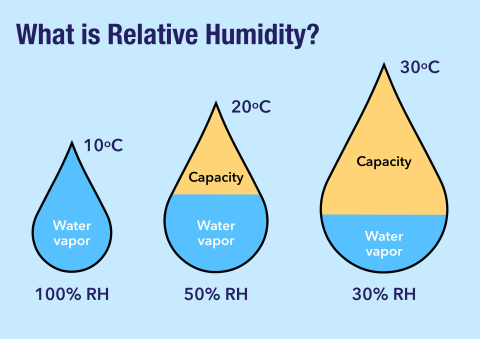
- As the temperature increases – RH decreases.
- The RH grows as the temperature drops (air becomes wetter).
- The RH decreases as the pressure decreases (air becomes drier).
- As the pressure increases – (air becomes wetter), the RH increases.
What is condensation?
Condensation is when water droplets begin to form on the inside of your windows and walls. It happens when the warm moisture (water vapour) meets colder air and cools quickly.
How does condensation get in my house?
If you live in an older house with older windows, they are less energy efficient than the newer ones built today. Consider upgrading and buying new windows. Condensation on the outside of your new windows is a positive indicator that demonstrates the new, modern windows are working to keep the heat in and humidity out.
Windows with a higher R-value are better able to handle humidity and prevent condensation from forming. Moisture and vapour barriers are designed to keep moisture out of the house. These barriers are usually made of plastic or foil sheets that help retain moisture and vapour from coming in through the basement walls, floors, or cracks. Water can cause severe problems for your home or your health if it causes household areas to become mouldy.
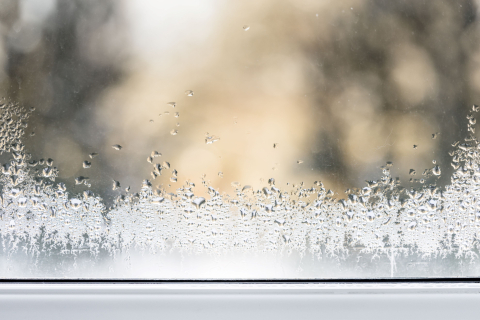
Inspect the house for any air leaks:
Winter is the ideal time to inspect your house for any air leaks or gaps by your windows or doors. Inspect your home's inside and outside, checking for moisture damage or mould build-up. While doing your inspection, keep in mind that the most common places for moisture problems are located:
- In the attic (if you have one) check for air leaks, inspect the insulation for any dampness and inspect the wood framing for rot and mould.
- Bathroom
- Door sills
- The basement walls (inspect the insulation and wood for any signs of mould or dampness) and floors.
- Window sills and frames
- Paint peeling (walls or sagging ceilings)
- Closets or storage spaces
Any frost or dampness in these areas may indicate air leaks or gaps, leading to mould build-up.

Identify Moisture Problems:
There are many ways to determine if you have a moisture or air leak problem. You can ask professionals, inform your landlord, or inspect yourself for a head start. Some of the questions you may ask yourself are:
- Is there standing water or foul/musty odour in the basement?
- Are there any air drafts along the walls in the basement?
- Are there any signs of 'moisture deterioration': rotting wood, soft drywall, or 'bulges' in the walls?
- During the winter, are the windows foggy?
- Are there any signs of frost building up in the attic? Is it colder than usual?
- Has the basement ever flooded?
Reduce any Moisture in the house:
Ventilating your home to circulate the air or let extra air or moisture out of the house also allows heat to escape. Discovering the location of the air leak is the best way to avoid moisture issues. Moisture problems are preventable. If you have already addressed the air leaks and gaps, and sealed the home, there are a few more things you can do:
- Using the exhaust fans in the bathroom and kitchen will help increase ventilation, and using the air conditioner will also help reduce the moisture level.
- Maintain the Relative Humidity between 30% and 50% with a dehumidifier.
- Use moisture-resistant materials in wet areas like the kitchen, bathroom, and laundry.
- Ensure the eavestrough and downspouts are drained away from the house. (Thousands of gallons of rain can come off your roof in a single storm)
- Ensure the eavestroughs and downspouts are free of debris. It's always a good idea to clean them before the weather gets too cold.
- Repair any leaks or get rid of standing water.
- Use a dehumidifier in damp areas like the basement
Other areas that are a good idea to inspect are:
- Inspect the roof for any leaks, especially near chimneys, eavestroughs, or cracks or holes on the roof.
- The walls of the house, especially near windows and doors. You should inspect the insulation if you notice a wall that is colder than others.
- The interior and exterior of the home's foundation, especially where the soil meets the foundation.
- Repair any plumbing leaks in the kitchen, bathroom, or laundry area, especially looking at the toilet's base and drains.
Air circulation is important to control the air and warm up the harder-to-reach areas like behind furniture, closets, or even corners of your home. Do not block your indoor vents; the vents help the air circulate throughout the home. Keep your closets and bedroom doors open so the air can spread evenly throughout the house.
Some homes have heat recovery ventilators (HRVs). These help circulate the air by pushing the bad, stale air out of the home while pulling in cool fresh air that gets warmed up before going through the house with the HRV's heat exchanger. If the 'air sealing' of the building or home is too tight, it can cause higher RH levels and more moisture indoors (which can cause mould and poor air quality) without proper ventilation.
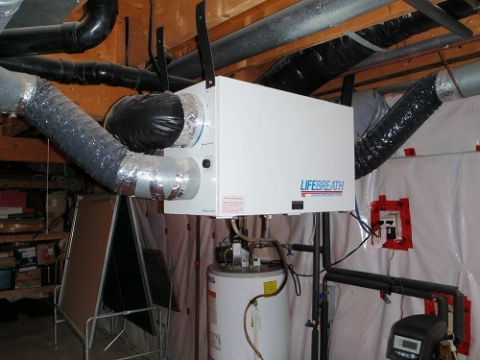

The HRV works especially well in the springtime as there is a lot of moisture and rain in the spring months. If you have recently built a new house, it will need a lot of ventilation because the wood and concrete need to 'dry out.' In the spring or summer months, your home may be more humid and muggier, while in the fall and winter months, your home may be drier and staler.
Understanding how moisture and condensation move in, out, around and through a home differently. Consider:
- Air movement
- Diffusion through materials
- Heat transfer
- Creating moisture in the home (cooking, laundry, showering)
You can help control the moisture in the house with a humidifier, a dehumidifier, or a fresh-air ventilator. All three items were designed to regulate humidity in a home.
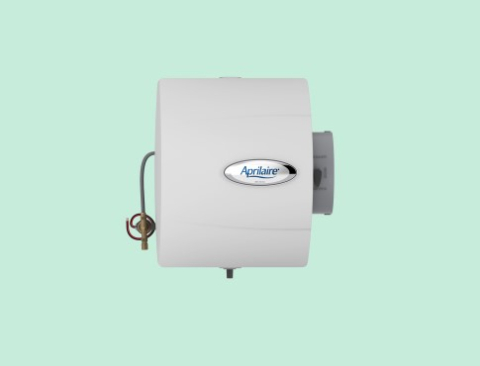
Humidifiers were designed to add moisture to the home's air. If the humidity gets too low, you may notice your eyes feel dryer, you may have more frequent bleeding noses, a scratchy throat, or your allergies may flare up. You might even experience more chest congestion, including asthma difficulties.
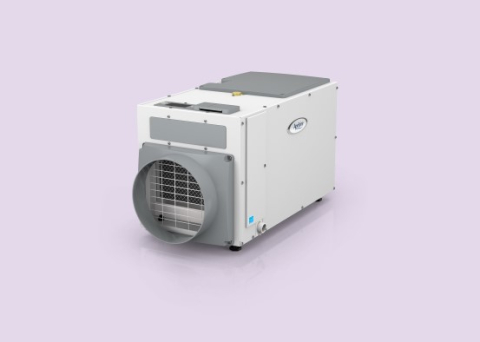
Dehumidifiers were designed to help control excess moisture in the house. They also help prevent allergies, asthma, mould, and humidity.
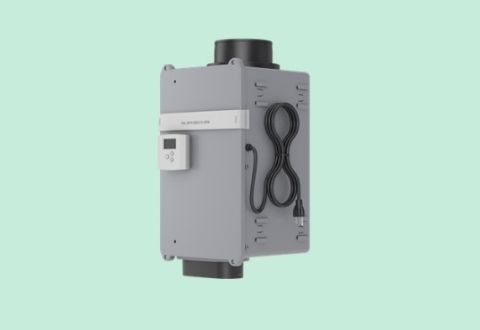
Ventilating systems are also available, which pull in fresh, cool outdoor air and push out dry, used, stale air to provide the home with fresh air. You can find these items at your local home hardware store or shop online.
Air or moisture will always choose the most accessible route: a gap, crack, or hole in the foundation or house. Choosing a moisture control strategy can teach you to inspect and air-seal your home correctly. Preventing air leaks or condensation also depends on the climate in your area, the type of house you have (construction materials), the type of insulation, and the basement design. If needed, you can always ask a professional.
By: Tricia Cook, Content Navigator